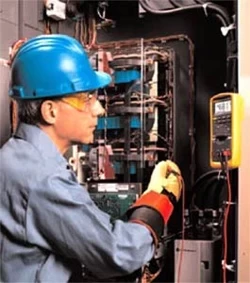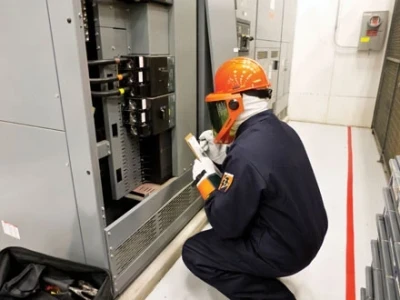Arc Flash Safety Strategies

Maximizing safety and minimizing downtime
BY MAURICE D’MELLO, GE Industrial Solutions
A generation ago, an arc flash hazard was an interesting tangent to consider in electrical system design, but not a major topic for discussion. That all changed with the Canadian Standard Association’s CSA Z462: “Workplace Electrical Safety” standard. Arc flash hazards are now important components of electrical safety. Engineers across the electrical industry are rethinking strategies that keep workers safe while, at the same time, maintaining facility uptime.
There are many ways to institute an arc flash hazard protection strategy. One of the simplest ways is labeling. Engineers determine the potential arc flash energy within equipment and label the equipment accordingly.
The calories per square-centimeter (cal/cm2) on the label would then tell workers the level of personal protective equipment (PPE) they need to wear in that particular work environment. PPE could range from simple safety glasses and arc-rated clothing at 8 cal/cm2 to heavy, cumbersome full arc flash suits and hoods at 40 cal/cm2. The design goal should be to create a system with a lower arc flash incident energy. This minimizes potential injury and damage, while also lowering arc flash labeling numbers to levels that enable workers to operate with less restrictive PPE.








